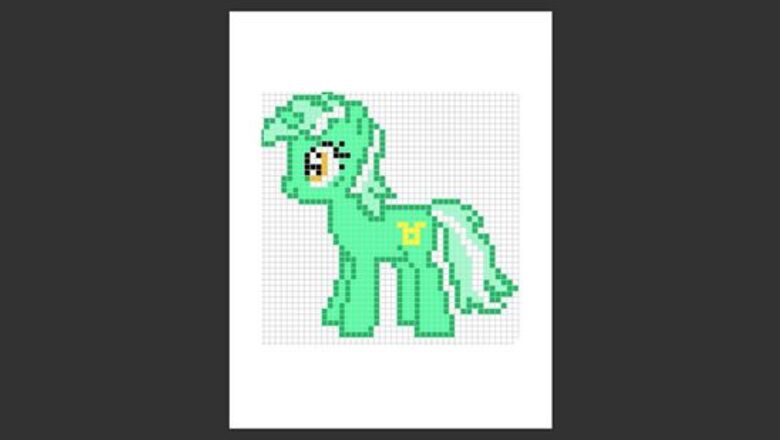
views
Assembling Your Supplies
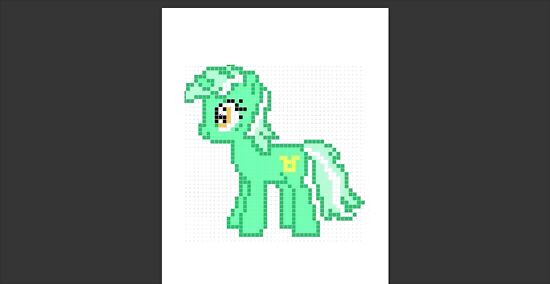
Choose a simple pattern with very few color changes. Intarsia isn’t hard to learn, but it can be difficult to get down when you’re juggling lots of different yarn colors and patterns at once. Instead, start with a simple design that only involves a few color changes, so you can really hone in on your technique. Here are a few simple patterns you might try: Cat Silhouette Pattern Pony Pullover Sweater Pattern Checkered Sweater Pattern Checkered Vest Pattern Duck Baby Blanket Pattern Dinosaur Baby Blanket Pattern
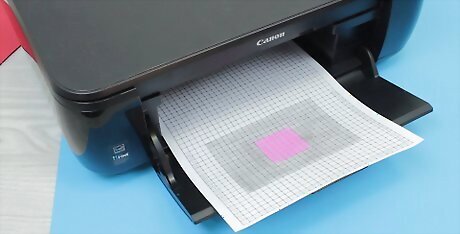
Make your own pattern with knitter’s graph paper if you have your own idea in mind. Print out a sheet of graph paper that matches the dimensions of your knitting project. Each square on the paper represents a single stitch—all you need to do is color in or mark each square with your desired color until you’ve sketched out your pattern. You might notice that a sheet of knitter’s graph paper looks a little more squashed than traditional graph paper. That’s intentional, as stockinette stitches are wider than they are tall. The squashed graph paper grid helps you plan out a more realistic design, so your finished intarsia knitting project doesn’t look disproportionate.

Wind a yarn bobbin for each color change you’ll make in your project. With intarsia knitting, you don’t switch back and forth between 2 different balls of yarn. Instead, wind a bobbin for every color you’ll be switching to, even if you’re repeating a color within the pattern. If you were knitting an intarsia pattern that alternated between yellow, black, green, black, and yellow, you’d need to have 2 yellow bobbins, 2 black bobbins, and 1 green bobbin. Yarn bobbins are like mini yarn balls—they make it easy for you to switch colors in the middle of a knitting row without having to deal with multiple bulky yarn skeins. Most intarsia yarn patterns will tell you how much yarn you’ll need to have on hand for the project. Your base yarn ball can count as 1 bobbin.
Changing Colors (Knit Row)
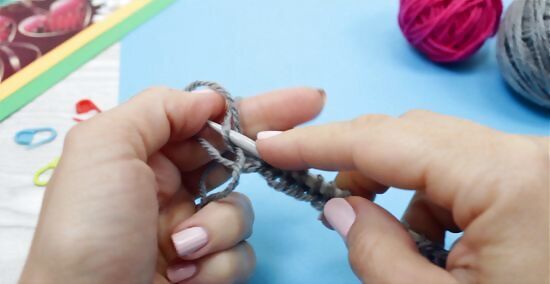
Cast on and knit the entire project with stockinette stitch. Many intarsia projects are made with the stockinette stitch, where you flip your work after each row and alternate between rows of knit and purl stitches. The knitted portion of your project is called the “right” side, while the bumpier, purled back section is known as the “wrong” side. With simple intarsia projects, you may have to knit and purl several rows of solid color before you start switching colors. A stitch marker can be used to tell right and wrong sides apart when working with a pattern.

Stitch the first section of color in the row. Let’s say that you’re knitting a gray pot holder with a pink rectangle in the center. Using your gray bobbin or yarn ball, knit a gray series of stitches in the beginning of the row. Your intarsia pattern will tell you how many stitches of each color you need.

Let go of the working yarn and place it to the left of your project. Don’t cut the yarn or tie it off—just drop it behind the left side of your project so it’s parallel with your left knitting needle. This working yarn will be on the “wrong” side of your knitting.
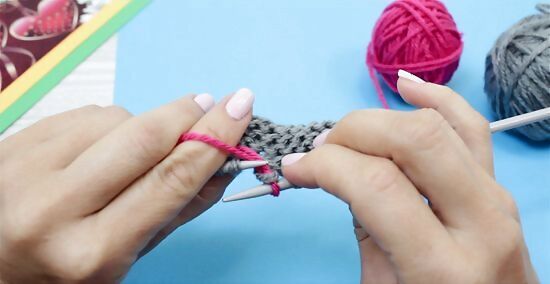
Create an “X” by pulling the next working yarn color over the old one. Slide your knitting needle into position in preparation for the next stitch. Then, yarn over with the new section of working yarn, pulling it over and on top of the old piece of yarn. This technique is also known as “twisting” the yarn. It helps keep your stitches tight and snug, and prevents any holes from forming.

Knit the next section of your project in the new yarn color. Continue knitting along the next color block with your newest yarn color. Work in this color until the row ends or until your pattern tells you to switch yarn colors again. When you work in stockinette stitch, you’ll need to alternate between rows of knit and purl stitches as you flip your work.
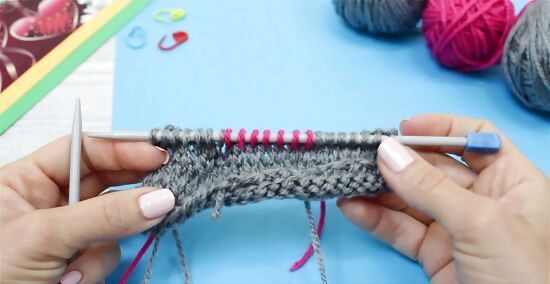
Switch to a new yarn bobbin whenever you alternate colors. Never reuse an old bobbin when starting a new color block, even if you’re repeating a color. This creates a big, unwieldy loop along the back of your project that isn’t very pleasant to look at.
Changing Colors (Purl Row)

Flip your project and purl the first color section. Intarsia knitting projects are almost always worked in stockinette stitch—so, every time you finish a knitted row, you’ll flip your project around and work the next row in purl stitch. At this point, the “wrong” side of your project is facing you while the “right” side of your project is facing behind. Make sure that the bumpy side of your project is facing forward, while the smooth, knitted side is facing backward.
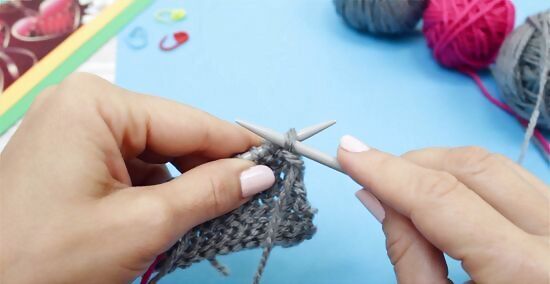
Slide your working needle into the first stitch of the next color. Since you’re doing a purl stitch, slip your working needle into the stitch so it’s in front of the other needle. Your knitting needles will now form a mini “X” shape.

Pull the old strand of working yarn to the left side of your project. Place the yarn in front of your knitting, keeping it about parallel with your non-working needle. Since you’re completing a purl row, the working yarn will automatically be in front of your knitting project, rather than behind.
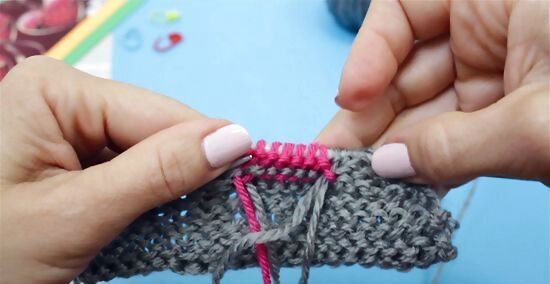
Grab the working yarn of the next color and purl the first stitch of the new color. Pull this piece of working yarn up and over the old section of working yarn that you pulled to the left. Then, purl the next stitch as you normally would. Pulling the new working yarn up and over the old working yarn helps “twist” the colors together. It prevents any holes or gaps from forming in your project and keeps your knitting seamless.

Complete the purled row, switching colors when necessary. Use the same color-changing technique whenever you switch over to a new color block. Bring the old section of working yarn to the left (in front of your knitting), cross the new working yarn up and over the old strand, and then purl again. Once you’ve finished the purl row, flip your project around and do another row of knitted stitches.
Securing Loose Yarn
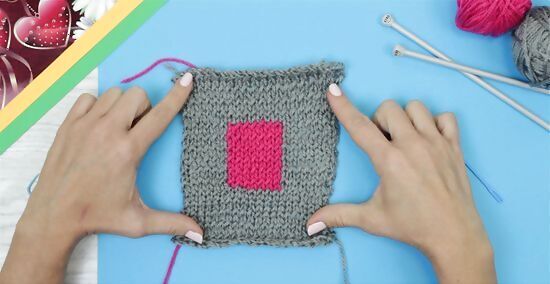
Flip over your project so the “wrong” side is facing up. The “wrong” side of an intarsia project is filled with loose yarn tails from all the different times you changed colors. Weaving and securing these strands help the corners of your color blocks look neat. All loose strands get woven into the “wrong” side of the fabric so they aren’t easily seen.
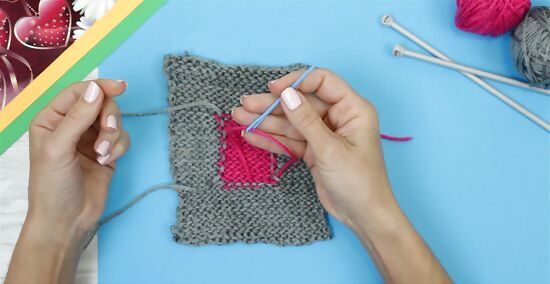
Thread a loose section of yarn into a tapestry or yarn needle. Tapestry or yarn needles are much bigger than a traditional sewing needle, making it easier to thread the yarn and weave it in. Yarn needles are much less sharp than regular sewing needles.
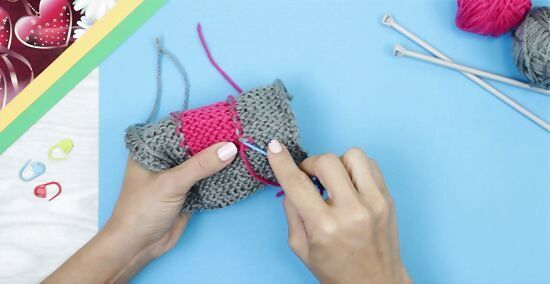
Stitch and tug on the loose yarn to remove any gaps. When knitting intarsia, the first stitch of a new color block can end up being loose, which creates a small gap along the corner. On the “wrong” side of the project, slip the thread through a neighboring purl stitch and tug upwards—this gets rid of the mini gap. Double-check the “right” side of your project to make sure that the gap is gone.

Weave the strand along the “wrong” side of your project. Take the end of your tapestry or yarn needle and work it through the purled stitches along the edge of the matching color block. Then, slide the tapestry or yarn needle off of the yarn strand. Lightly tug on both sides of your knitting after you’ve woven the extra yarn. This keeps the newly-woven yarn from being super tight.

Cut off any excess yarn with a pair of scissors or snippers. Grab the remaining section of yarn and measure about ⁄2 in (1.3 cm) from the knitting. Snip off any extra yarn beyond this point, leaving just a short tail.


















Comments
0 comment